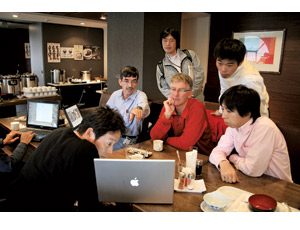The ASCE has been dispatching teams to investigate and draw engineering lessons from disasters since the Johnstown Flood of 1889, when a private impoundment dam failed and killed 2,200 people. It has earned the highest regard for its dedication to applying impartial analysis to catastrophe and improving the standards of engineering practice through its findings. ASCE's current roll out of seven sequential teams to gather data and parse lessons from Japan's powerful March 11 earthquake and the subsequent devastating tsunami is the latest example. The information to be gleaned from the wreckage of bent steel and shattered concrete is of incredible value but fragile as debris removal proceeds at a furious pace. As one of the engineers in the first group on the ground in Japan noted, we may not see such a tsunami event like this again in our lifetimes. On the other hand, we could see the mirror of it tomorrow on the northwest coast of the U.S. and Canada.

As the engineers make plain, tsunamis are very different from storm surge, and there is very little performance data available on how structures respond to their impact, including the forces of water and the debris in it. Yet critical infrastructure invariably concentrates in tsunami danger zones. Obvious examples are ports and nuclear and industrial facilities as well as the communities that support them, including homes, schools, offices, government buildings and hospitals.
Yet very little in the way of tsunami risk- mitigation planning or engineering has been done in the U.S. The ASCE only agreed in February to set up a subcommittee to develop a chapter on tsunami loading for the next revision of the standard reference “ASCE 7 Minimum Design Loads for Buildings and Other Structures.” The group had not even had its first meeting when the incredible Japanese tsunami occurred, with run-ups of water as high as 32 meters in some coastal towns.
The failure to address the potential tsunami risk in the U.S. to date is somewhat understandable. It was only in 1986 that geologists recognized the 300-year-old historic record of a similar magnitude-9.0 quake and tsunami event generated by a subduction fault just off North America's northwest coast. Those concerns began to influence local public policy, including an increase in seismic resistance code provisions in Washington state and Oregon in the mid-1990s. However, just as the residents of Port-au-Prince learned last year, in seismic terms, ancient history is anything but irrelevant.
The ASCE is on the right track in Japan. Stick to it, and bring those lessons home.

Post a comment to this article
Report Abusive Comment